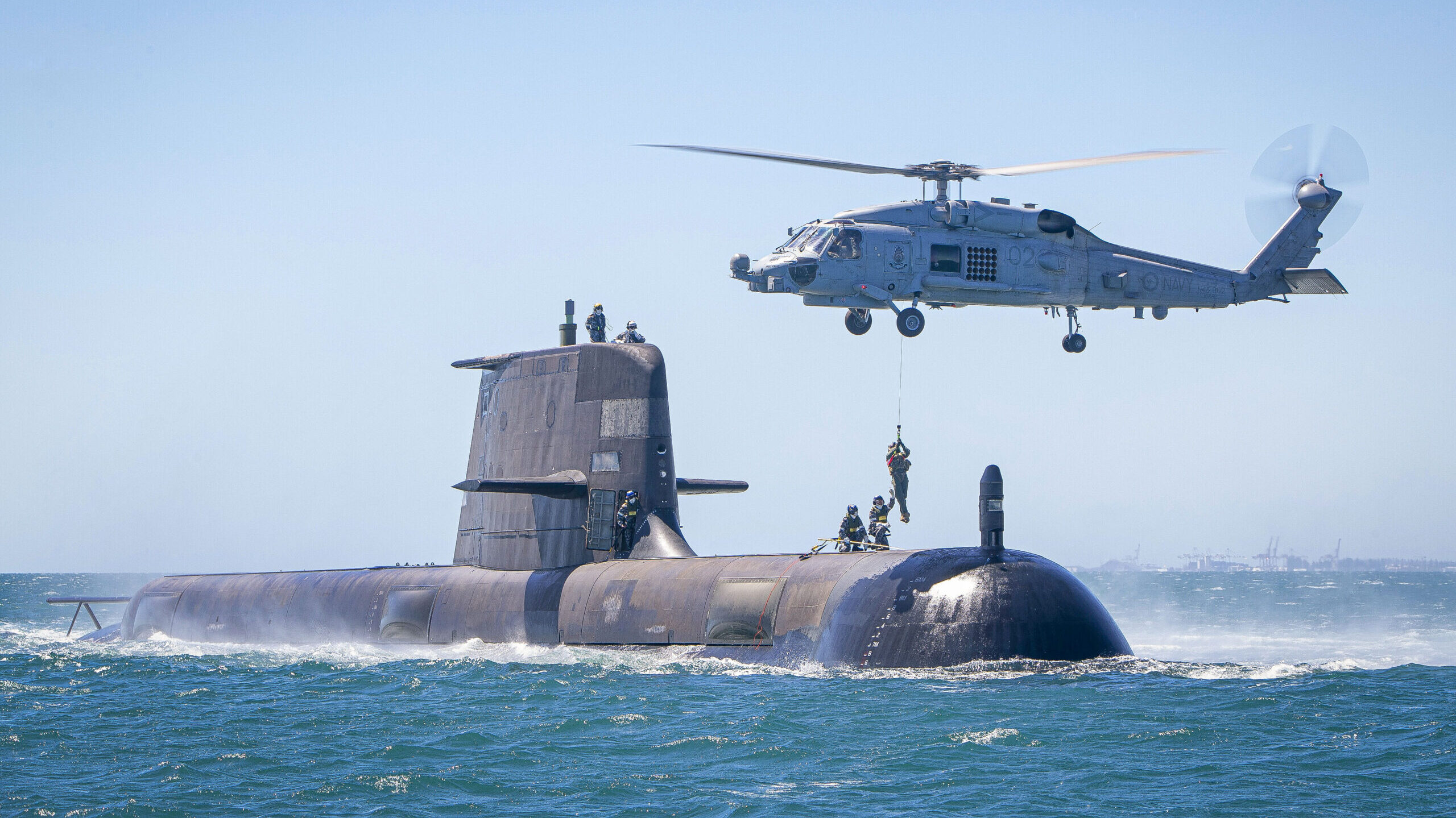
HMAS Rankin and her crew conducted workups and training assessments in the Western Australian Exercise Area to ensure the Collins Class Submarine is ready to safely deploy later in the year. (Royal Australian Navy)
SYDNEY: The new Australian defense minister, Richard Marles, says the country must race to fix the submarine “gap” caused in part by the scrapping of the plan to build French attack submarines in favor of an Australian nuclear attack submarine, among other moves by the previous government.
“What we saw under the former government was a gap of 20 years open up in terms of capability in relation to our submarines in just 10 years. It’s one of the worst failures of defense procurement that we’ve seen in our nation’s history under the former government,” he told Sky News in an interview on the day he took the oath of office.
Why does this matter so much? The submarine, he told the Australian Broadcasting Corporation’s Radio National, “is the single most important platform we have to help shape our strategic space.”
RELATED: What AUKUS means for Australia, more than nuclear subs
While the election is certainly over, Marles, who is also deputy prime minister, clearly hasn’t lost the knack of partisan politics.
“Well, we saw a lot of chest beating on the part of the former government, they were pretty good at their rhetoric, but in terms of what they actually did, managing the hard power equation, they were a complete failure,” he said in the Sky News interview.
Part of the reason for that late attack may be to set up expectations that his government will find it challenging to fix this problem.
There’s considerable disagreement about when the first Australian nuclear attack subs will be deployed. Some experts say it won’t happen until 2040. Peter Dutton, the former defense minister, said he thought the first subs could be deployed in the 2030s, though he offered no details to back the prediction.
Some former Australian submariners surfaced in recent days to call for action to close the sub gap.
“So, Australia must keep the Collins submarines running until 2040+ or acquire some new conventional submarines. The fact is that arguably both must be done, or the Collins submarines will be retiring at age 45 and beyond,” a group of the bubbleheads wrote in a paper titled, “An Expression of Grave Concern.” When the subs are that old, they say the boats “will certainly be materially obsolete, worn out and even harder to support by then. It’s reasonable to ask whether they would still be safe to operate, let alone whether they should be used in a fight.” The ABC first reported their concerns.
The submariners, who have served on Australia’s current Collins submarines and its predecessor, the Oberon-class, say “extending the lives of the six Collins submarines is as essential as it is now urgent.” But they say “only preliminary work has been done on a life extension that will involve very major industrial surgery to the submarines.”
One of the signatories to the appeal is retired Chief Petty Officer Greg Jones. He helped start the Royal Australian Navy’s (RAN) Submarine Sea Training Group. The group who support the appeal boast 500 years of experience. Jones and the group don’t oppose the nuclear attack submarines that are key to the AUKUS agreement. They write that “the decision to acquire nuclear submarines makes sense.”
But the gap between when the Collins class will basically reach the end of its life and the nuclear-powered vessels will arrive really concerns them.
An extension for the Collins class has been approved in principle. There are persistent rumors that the Collins’ original designer, Swedish sub-builder Saab Kockums, is ready to build a new series of boats — Collins 2.0.
Former defense minister Dutton said emphatically there were no plans to build what we can call a gap submarine. During an election debate at the National Press Club, for example, he said: “It is not in our national interest to pretend we can have a third class of submarine — somehow, we can buy it off the shelf.”
The outgoing head of the Royal Australian Navy, Vice Adm. Mike Noonan, told the Indo-Pacific conference here earlier this month that what he called “an interim submarine” would “bring more challenges than it would capability and it would seem inconceivable that a small navy such as ours could viably operate a transition of Collins, to an interim, to a nuclear.”
The head of Saab Kockums, Lars Tossman, recently told the ABC they would help Australia if asked. They could start with the A-26 sub, he said.
“If they choose to do that, I think the recent experience we have with designing and producing the A-26 modular design — that could be of use for a gap-filler here,” Tossman said. That modular design is meant to make the sub especially suited for export.
So where does all this leave the new defense minister? The bottom line for Marles: “I don’t have the answers upfront. I mean, there’s a lot of work to do. I think that the most important point to say to you, in 30 seconds is; this is just about the number one priority for me coming into this portfolio.”






















